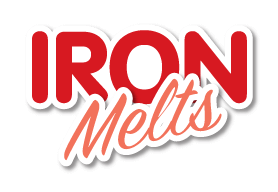FAQ
What is Iron Melts tablet indicated for?
Iron Melts may assist in the management of dietary iron deficiency.
It helps boost energy and endurance.
What are the main ingredients contained in Iron Melts
Iron, Folic Acid, Vitamin C & Vitamin B12.
How does Iron Melts work?
Iron is an essential constituent of the body, being necessary for haemoglobin formation, which transports oxygen to the tissues. Iron Melts can assist in maintaining normal blood.
Folic Acid is a member of the Vitamin B group that everybody needs, it is especially important for pregnant women, as it may reduce the risk of birth defects. It helps the body make healthy new red blood cells.
Vitamin C helps to enhance the absorption of iron from the gastrointestinal tract to the blood stream.
Vitamin B12 helps maintain health red blood cells and nerve cells.
Who can take Iron Melts?
Iron Melts is suitable for people whose diet is lacking in natural iron and vitamins, including pregnant and nursing women, and children.
Do I need a prescription to buy Iron Melts?
No, Iron Melts is an over the counter product and does not require a prescription.
How do I take Iron Melts?
Chew or suck one to two tablets daily.
Does Iron Melts contain Gluten?
No, Iron Melts is Gluten free.
Does Iron Melts contain Lactose?
No, Iron Melts is Lactose free.
Where can I buy Iron Melts?
Iron Melts is available in leading pharmacies and Woolworths. Click here and enter your postcode in the store locator to find a stockist near you.







